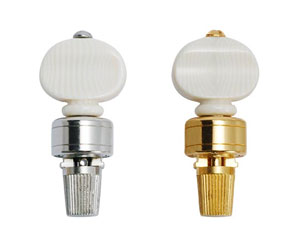Banjo Pegs FAQs
Q: Are banjos only made with four strings?
No. Even though the original banjos were manufactured with only four strings, later on they were made with five and six strings. You will find quite a variety of four-string banjos, such as the plectrum and the tenor banjo. These were quite popular in Irish traditional music because of the chord melody the strings generated. In addition, they were also quite common in jazz music and tremolo style. Moreover, the five-string banjo is capable of producing a higher open pitch with that extra string. However, the tuning doesn’t go from the lowest pitch to the highest, but rather from the fourth it decreases to the first, and then jumps to the fifth. In general terms this is known as reentrant tuning. Last but not least, the six-string banjo was first developed in England in the 1840s. They were made with a closed back and some of the banjos featured up to seven strings.
Q: How to care for a banjo during the winter?
Some people worry about taking proper care of their banjo during the winter. The truth is that heat and dryness are a lot more dangerous for your instrument. When compared to other types of acoustic instruments, the banjo happens to be more resistant to weather changes. This is due to the fact that the body isn’t exactly vulnerable. However, it’s important to always remember to keep your banjo in its case if you’re not using it. During the winter, make sure to store it away from heaters or hot spots. Even if you’re inside your house or apartment, the heat – from a heater – can damage the neck of your banjo. If you happen to be moving around from one place to the other, and there are drastic temperature changes, give the banjo time to get accustomed to the temperature (about 20 minutes should do).
Q: How many types of banjos are there?
There are several types of banjos, but the main ones are the following:
- Acoustic – these are the original banjos made with loops and strings. Even though the loops were later replaced with banjo tuning pegs, the strings still remain the same. They were originally made from nylon, but today you can find them made of metal.
- Electric–they are still made like the acoustic banjos but have the capability of being plugged in to an amplifier for a louder sound.
- Hybrids–when musicians cross two instruments, this is called a hybrid. Examples of banjo hybrids are the banjo ukulele (banjolele) and the Banjolin.
Q: Where can I buy a banjo and its accessories?
Finding the right place for you to purchase your banjo doesn’t have to be difficult. Perhaps, using the web can provide you with the fastest and easiest way of shopping for a banjo. This is due to the fact that the majority of music stores have their virtual storefront as well. Visiting websites such as Stew Mac, Janet Davis Music, and Elderly Instruments will give you the choice of purchasing your banjo right there on the web without having to leave your house. Available accessories include banjo pegs, tuner buttons and tuners.

